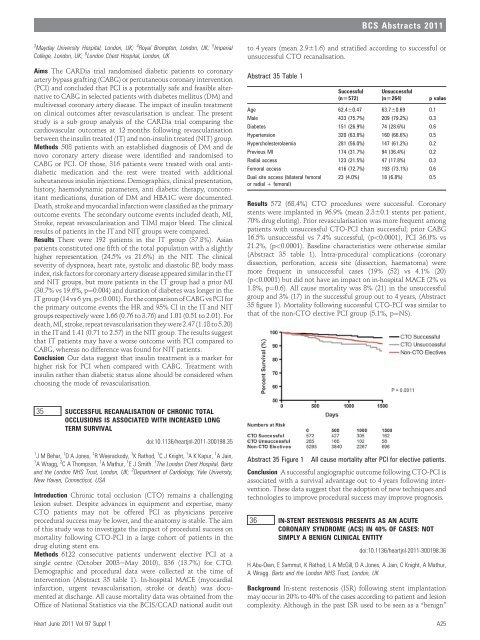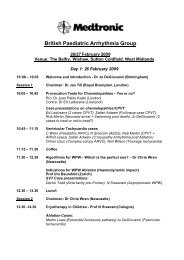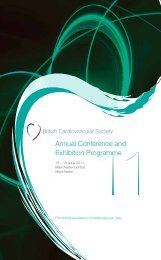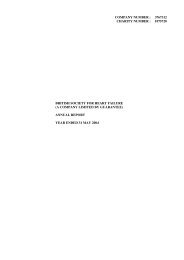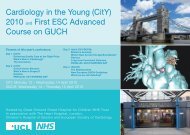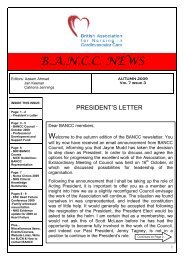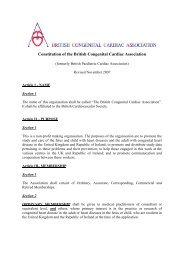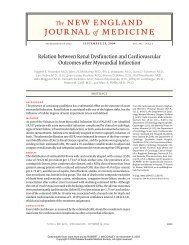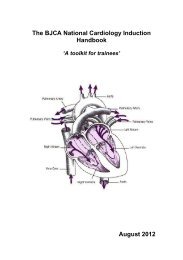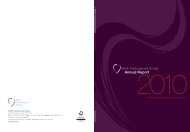Full Supplement - British Cardiovascular Society
Full Supplement - British Cardiovascular Society
Full Supplement - British Cardiovascular Society
You also want an ePaper? Increase the reach of your titles
YUMPU automatically turns print PDFs into web optimized ePapers that Google loves.
BCS Abstracts 2011<br />
3 Mayday University Hospital, London, UK; 4 Royal Brompton, London, UK; 5 Imperial<br />
College, London, UK; 6 London Chest Hospital, London, UK<br />
Aims The CARDia trial randomised diabetic patients to coronary<br />
artery bypass grafting (CABG) or percutaneous coronary intervention<br />
(PCI) and concluded that PCI is a potentially safe and feasible alternative<br />
to CABG in selected patients with diabetes mellitus (DM) and<br />
multivessel coronary artery disease. The impact of insulin treatment<br />
on clinical outcomes after revascularisation is unclear. The present<br />
study is a sub group analysis of the CARDia trial comparing the<br />
cardiovascular outcomes at 12 months following revascularisation<br />
between the insulin treated (IT) and non-insulin treated (NIT) group.<br />
Methods 508 patients with an established diagnosis of DM and de<br />
novo coronary artery disease were identified and randomised to<br />
CABG or PCI. Of those, 316 patients were treated with oral antidiabetic<br />
medication and the rest were treated with additional<br />
subcutaneous insulin injections. Demographics, clinical presentation,<br />
history, haemodynamic parameters, anti diabetic therapy, concomitant<br />
medications, duration of DM and HBA1C were documented.<br />
Death, stroke and myocardial infarction were classified as the primary<br />
outcome events. The secondary outcome events included death, MI,<br />
Stroke, repeat revascularisation and TIMI major bleed. The clinical<br />
results of patients in the ITand NIT groups were compared.<br />
Results There were 192 patients in the IT group (37.8%). Asian<br />
patients constituted one fifth of the total population with a slightly<br />
higher representation (24.5% vs 21.6%) in the NIT. The clinical<br />
severity of dyspnoea, heart rate, systolic and diastolic BP, body mass<br />
index, risk factors for coronary artery disease appeared similar in the IT<br />
and NIT groups, but more patients in the IT group had a prior MI<br />
(30.7% vs 19.6%, p¼0.004) and duration of diabetes was longer in the<br />
IT group (14 vs 6 yrs, p


